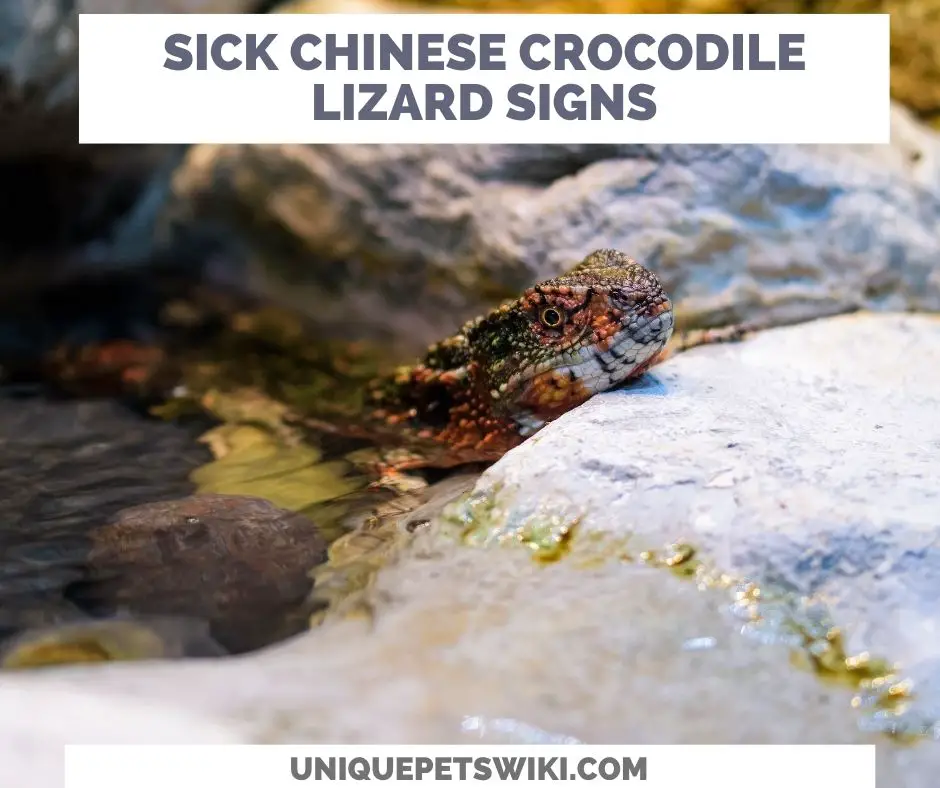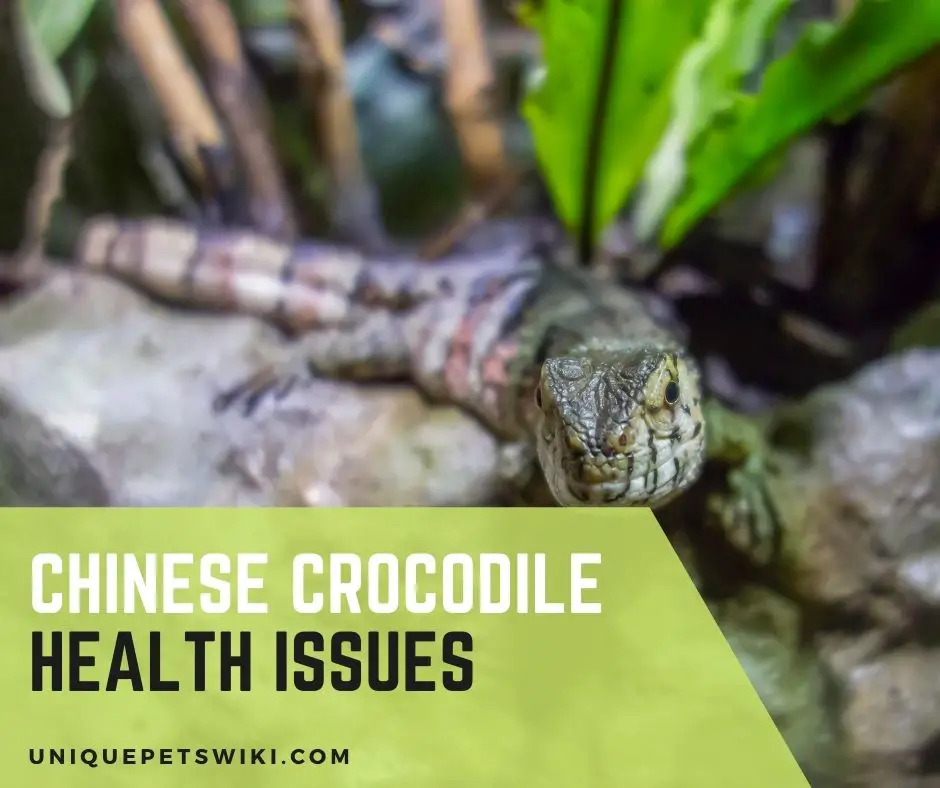If you have kept any species of reptile lizard before, you should be familiar with some diseases common to captive reptiles. Unfortunately, the Chinese crocodile lizards seem to be uniquely different in so many ways. This makes the article Chinese crocodile lizard common diseases a must read to keep you informed on how to better care for your pet lizard.
For one, their cage set up is quite different from that of other species of reptile lizards. Secondly, they hardly will fall sick if you manage them well.
But if they do fall sick, what do you do to remedy the situation before it takes your lizard’s life? How can you tell when your lizard is ill? What are you supposed to check for to ensure that your lizard stays in health?
All these and many more will be treated in this article. You’re reading this because you care about the health of your lizards.
Your understanding of these diseases and health concerns will help you to be a better keeper to your lizard. Keep reading.
This article has been reviewed by Dr. Dilber. Read more about our knowledge control process here.
Contents
- Signs Of A Healthy Chinese Crocodile Lizard
- Signs Of A Sick Chinese Crocodile Lizard: Chinese Crocodile Lizard Common Diseases And Illnesses
- Chinese Crocodile Lizard Common Diseases & Illnesses
- Chinese Crocodile Lizard Sexing Problems
- Baby Chinese Crocodile Lizard diseases and health Problems
- Chinese Crocodile Lizard Health Concerns
- Do Chinese Crocodile Lizards Die Of Old Age?
- Conclusion
Signs Of A Healthy Chinese Crocodile Lizard

Both in the wild and captivity, the shinisaurus aren’t characterized as ‘very active lizards’. As a matter of fact, they’re known to often go on a metabolic pause from time to time.
What this means is that they would appear motionless and would usually not respond to stimuli (feel nothing) for several hours.
While in this condition, they would slow down metabolism to conserve energy. With this in mind, it would be difficult to tell when your lizard is sick and when it’s fine.
That notwithstanding, a few healthy signs to keep you abreast include regular eating, regular pooping, regular shedding, being active (that is climbing a lot or resting on branches) during the day, clear eyes, mouth, and nose, smooth and healthy-looking skin (scales), and the absence of ticks or bugs.
Let’s look at each sign in detail.
Looks (Bones, Skin)
The Chinese crocodile lizard also called the shinisaurus is a hardy lizard with well-developed limbs and a muscular tail marked with dark and light bands.
Its beautiful body color includes green with reddish markings along the neck and alternating light and dark bands, a robust head, and keeled scales. Signs other includes:
- healthy densified skin
- Fleshed bones
- Absence of skeletal deformities
The two bony scales running along its back and tail giving it ‘a crocodile look’ is the reason it’s given the name ‘crocodile lizard’.
This species of lizard is gender dimorphic which means that the males and females aren’t physically the same. While the females appear dull in color and smaller in size, the males appear more radiant in color, much larger, and beautiful.
Other than this, this lizard is relatively small in size. Its shape can best be described as almost square because its tail takes up 60% of its total body size.
It has a laterally flat tail which ensures excellent propulsion in water, a short head and wide neck strong enough to overpower and crush all kinds of invertebrates. Its legs are also powerful which makes it an excellent climber.
All these contribute to a healthy shinisaurus. Hence, if your lizard is appearing duller in body color or patterns than usual, or its limbs become too weak to encourage climbing and swimming, then it’s likely sick of Metabolic Bone Disease (MBD).
Size & Weight
The Chinese crocodile lizard isn’t a large lizard as its name would suggest. The largest the lizard can get as an adult is 46cm (18 inches). As noted earlier, the lizard’s body is square-like in shape with the tail taking up about 60% out of the 18 inches body size.
With this size, this lizard can be handled with one hand comfortably. Aside from being small in size, this lizard is also lightweight. As an adult, it weighs 10 ounces (0.283 kg).
Babies and juveniles would weigh even lighter. However, you can tell that your lizard is sick if it weighs significantly lighter than normal and hasn’t been feeding well for a long while.
Productivity
Chinese crocodile lizards reach sexual maturity between 2 to 3 years.
A healthy Chinese crocodile lizard will give birth to live babies after a-nine to twelve-month gestation period without any complications. Since they’re viviparous with no parental care, the babies can fend for themselves immediately after birth.
On the contrary, a lizard that hasn’t reached full maturity in age and size will have difficulties giving birth and may need surgery or induce labor. This sometimes can affect the babies if not detected and treated on time.
One of such effects on the neonates is stillbirths. In some other cases, the babies are born weighing below normal. And because of this, they usually die a few days afterward.
Eating Habits (Eating Frequently)
Depending on the age, a healthy young shinisaurus lizard will eat at least once a day. Once your lizard gets to adulthood, you’re supposed to limit the amount of food given to it.
But if the lizard is sick of any disease, one of the signs will be loss of appetite. Thus, when your lizard keeps rejecting food for two to three days or more when the lizard isn’t bromating, run a medical check on it.
In addition, evaluate your husbandry to be sure every cage requirement is optimal. Chinese crocodile lizard mostly feed on earthworms, snails, tadpoles, mealworms, insects, and crickets.
Poops
Chinese crocodile lizards though semi-aquatic prefer the water to the land. They carry out most of their activities in the water such as sleeping, giving birth, shedding, and even pooping.
The color of their poops isn’t established as they poop inside the water area of their enclosure. You would only notice some debris which you should filter out of the water to keep the water clean.
Shedding
Some species of lizards shed every month to keep healthy skin. The Chinese crocodile lizards don’t shed quite often. When they’re in the shed, you’ll see their skin in the water area of the cage.
Frequent shedding up to twice a month is a sign of underlying sickness that needs urgent medical attention.
Signs Of A Sick Chinese Crocodile Lizard: Chinese Crocodile Lizard Common Diseases And Illnesses

As stated earlier, if you don’t make it a habit to examine your lizard at least once a week, you might not notice some signs of diseases or sickness until it becomes worse.
Captive Chinese crocodile lizards kept in appropriate environments will not have serious health issues. They would only develop health issues if their habitat isn’t kept to standard, especially the water area and humidity level.
The most common disease among them in captivity is bacteria and fungus infections which causes skin diseases. Signs that your shinisaurus is sick include:
- Loss of appetite.
- Lethargy. Very slow movement or complete inactivity.
- Weak limbs.
- Not able to swim or spend most of their time out of water.
- Pale looking tail. A condition where there aren’t fat reserves in the tail.
- Weight loss.
- Shaded skin
- Indigestion
- Diarrhea
- Dull eyes
- Visible and pointed bones.
Chinese Crocodile Lizard Common Diseases & Illnesses
Fungal and bacterial infections are often the most common diseases among Chinese crocodile lizards. Other diseases such as metabolic bone disease which are diet-related are rare.
What often lead to the breed of fungi and bacteria that causes infections are:
- Poor cage set up.
- Poor maintenance of the water area of their cage. That is keeping it too cold.
- Poor ventilation and higher humidity.
When either or all of these factors occur to their habitat, the air in their habitat becomes moist making it difficult for the lizards to keep dry when not in water.
When the Chinese crocodile lizards come out of the water, they should get dry after some time. If their skin is wet all the time, this provides a good environment to te fungal growth and skin infection. As a result, the dermal cells of the skin get infected and inflamed.
Signs/Symptoms
- Signs and symptoms of bacterial and fungus causing skin infections are
- Scale rot.
- Excessive or frequent sheds.
- Loss of appetite.
- Weight loss.
- Inactivity.
Treatment
- For effective diagnosis and treatment, it is best you take the affected lizard to the vet. The reason is that before antimicrobial drugs can be administered to the lizard, the actual micro-organism (bacteria/fungi) causing the infection needs to be identified.
- However, in a very severe case, while making plans to take the lizard to the vet you can administer any of these antibacterial drugs to it. They are Nystatin, procaine penicillin G, ampicillin, oxytetracycline, amikacin, and ceftazidime.
- While the lizard is on treatment, ensure to separate it from other lizards if you housed more than one lizard.
- Also, to ensure fast recovery it is best you treat the affected lizard in a dry box till it recovers. The water in its habitat will prolong the healing process.
Prevention Of Bacterial/Fungus Infections
Since this is the major health problem of captive Chinese crocodile lizards, preventing the disease from infecting your lizards is better and cheaper than cure.
- One way to prevent this disease is to ensure proper ventilation in their enclosure.
- Also, ensure that the humidity level in the cage isn’t high. Your lizards must be able to keep dry always if they aren’t in the water.
- Ensure also that the water is always clean and warm. Filtration is recommended.
Metabolic Bone Disease (MBD)
Metabolic bone disease is another disease that affects captive shinisaurus. This disease is diet-related. It is characterized by low levels of calcium which leads to weak bones and limbs.
The disease occurs when the lizard cannot absorb calcium from its food. For the lizard to absorb the needed calcium from its diet, it must have vitamin D3.
In the wild, aside from getting vitamin D3 from food, it is gotten naturally from UVB by exposing the skin to daylight.
Chinese crocodile lizards are temperate lizards. Thus, they aren’t known to sun bask in the wild. Even with this, in their natural habitat, they still do get the needed amount of UVB by exposing their skin to daylight. With this in mind, it’s best to provide them UVB bulbs in captivity.
If the UVB bulbs aren’t emitting the required amount of UVB needed for their survival, over time the lizard will suffer a lack of calcium which will lead to metabolic bone disease.
To prevent this, supplementing their diet with calcium and vitamin D3 is also very important.
Signs/Symptoms Of Metabolic Bone Disease (MBD)
- General weakness of bones and limbs.
- Slow movement or complete inactivity.
- Weight loss.
- Loss of appetite.
Treatment of MBD
- Metabolic bone disease is better prevented than treated. To ensure that your lizard doesn’t suffer from it you must use appropriately functioning UVB bulbs.
- You must also replace the bulbs after 6 months of use to get the best from it.
- You can also add supplements that include calcium, vitamin D3, and essential vitamins that are vital for bones.
- If your lizard is already affected with metabolic bone disease, take it to see your vet for proper treatment.
Chinese Crocodile Lizard Sexing Problems
To conserve these species for long term survival, captive breeding is encouraged since they are listed as endangered on the International Union for Conservation of Nature’s Red List (IUCNRL).
But sadly, determining sex among these lizards isn’t easy. They lack clear and obvious differences in sexual appearance. This makes the effort to conserve them through captive breeding strenuous.
Breeders who have successfully bred these pairs adopt a difficult but helpful approach of looking at their head shape, size, and colors. Like I said, this method isn’t 100% accurate and you’re likely to mistake males for females and vice versa. The males usually have brighter colors but not in all cases.
According to Bert Langerwerf in his article, he noticed that the females have elongated heads than the males. After measuring 13 males and 17 females, he discovered that the males have an average of 0.064-inch head size while the females measured an average of 0.07 inches.
Although this method is not completely reliable because the numbers within the range tends to overlap between sexes, it is the only surefire method to tell their sex for now.
In a research conducted by Morris Animal Foundation, Dr. Tony Gamble, Assistant Professor of Evolutionary Biology at Marquette University, Wisconsin postulated a method of sexing Chinese crocodile lizards through genetics by determining their male and female chromosomes as with humans.
But this method is still in study and it’s not yet approved for testing on the lizards. Until this method is approved for use on the lizards, you can determine their sex by measuring their head size and looking at their colors.
Baby Chinese Crocodile Lizard diseases and health Problems
Although every disease discussed in this article can affect both babies and adults, baby shinisaurus seems to be more susceptible to fungal skin disease caused by poor humidity and ventilation than the adults.
In the wild, these lizards have ample air circulation at night when they sleep. However, in captivity, this cross ventilation is reduced especially if the enclosure doesn’t have openings to allow the free flow of air.
Poor enclosure set up like this coupled with high air humidity increases their chances of getting fungal skin infections.
Chinese Crocodile Lizard Health Concerns
Health concerns are not diseases. Rather, they’re signs and symptoms that indicate an underlying sickness or disease. The importance of understanding some of the health concerns is to help you identify any health issue on time before it gets worse.
Some of the health concerns are:
- Retained shed: Like with every other reptile lizard, your pet shinisaurus may have difficulty shedding off on its own. When this happens, you can assist by bathing it in warm water and manually removing the shed. However, if you don’t know how to do it, you can take it to your vet to avoid complications.

- Diarrhea: Diarrhea is often a sign of allergy that needs to be addressed before it gets worse.
- Loss of appetite and weight loss: are the two most common signs/symptoms of illnesses.
Your lizard can refuse to eat for natural reasons such as brumation and breeding. Aside from these natural reasons, any of the aforementioned diseases can cause loss of appetite.
When your lizard isn’t eating as supposed to, the next sign will be a drastic weight loss.
Once you notice these signs, you have to evaluate your husbandry to identify where the problem is. Once the cause of not eating or weight loss is identified, address it as soon as possible.
Do Chinese Crocodile Lizards Die Of Old Age?
Yes, they can die of old age if well maintained in captivity. But it is hard to tell if they die of old age in the wild because of their endangered status caused by deforestation.
In captivity, they have been recorded to live up to 15 years. Since their body will depreciate with age, it’ll be right to postulate that they do die of old age just like every other living thing.
Conclusion
From our discussion in this article, it is obvious that the most common disease in captive Chinese crocodile lizards is poor husbandry. Other than this malfunction in their husbandry, they wouldn’t get sick so easily.
Having this in mind, the best way to treat them of any disease or illnesses is to prevent it from occurring. This means that, for you to prevent bacterial or fungal infection, you must ensure that their enclosure is well ventilated.
Also, ensure that the humidity level isn’t raised above normal. In addition to this, supplement their diet with calcium and vitamin D3 even when you provide them UVB lights.
This will ensure that they get the required calcium they need for strong and healthy bones. In sum, if your lizard falls sick of any disease or infection, it is best you take it to the vet for proper diagnosis and treatment.
